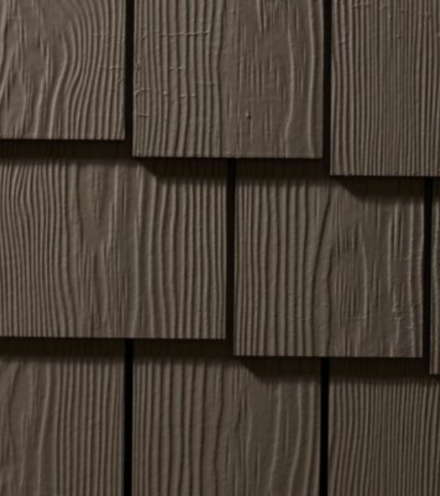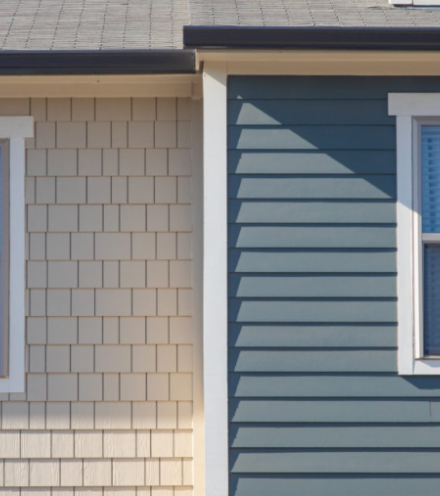A frequently overlooked, but incredibly important part of your home’s exterior is the soffit. Soffits are what cover the underside of your roof’s overhang. They hide the exposed rafters within and help to protect them from the elements. Good soffits are also usually ventilated to help allow air to circulate and prevent moisture build up.
Soffit Material Options
Like the rest of the areas covering your home’s exterior, a soffit can be made from several different types of materials. Each one has attributes that may or may not make it a good fit for your home.
When choosing the best soffit material possible, you need to make sure you compare it against the others to see where they lack, and the better materials excel.
Wood
Wood is one of the oldest materials used for soffits, and like wood siding is still around today. Also like wood siding, wood soffits have a grain and texture that makes them very visually appealing. They may be perforated or have vents placed in them, or they may be completely solid. Like wood siding, they can be painted in a variety of different colors.
Also like wood siding, however, wood soffits need a lot of care. If they’re made of cedar they will resist rot and insect activity, but only for so long before they begin to soften. In addition, cedar will bleed or stain the paint if a primer isn’t used, and the paint will begin to delaminate and peel over time, so it will need to be painted frequently to keep it looking its best and to help prevent future rot.
Vinyl
Vinyl soffits are another option that emerged along with vinyl siding in the 1950s. They’re billed as being lower in maintenance than wood, because while you can paint them, you don’t have to since the color goes right through.
Vinyl soffits also come in perforated and vented varieties, and most have the appearance of a wood grain. However, like all vinyl, they are susceptible to both heat and cold, melting in hot temperatures and cracking in freezing cold. So, they may not last as long as you need them to in order to protect this area of your home.
Vinyl soffits also look like the plastic that they are. They have seams that overlap one another, rather than sitting flush against each other. This overlap casts a shadow that can detract from the appearance of the home.
Aluminum
Aluminum is another material that’s been around for decades as a covering for the exterior of houses. Like vinyl, it was first created to be an alternative to wood, one that wouldn’t rot or require as much care.
Aluminum is available in a range of different colors as well as several textures. It can be smooth or have a simulated wood grain. It can also be perforated for ventilation or solid. It resists rotting and insects and is also flame retardant and doesn’t have the same issues as vinyl with heat and cold.
Aluminum does become chalky over time and the color fades unevenly, rather than peeling, which can detract from the appearance. Aluminum can also dent easily and may rust if the paint is removed from its surface. Because of the way that the color fades, anyone cleaning the gutters nearby may get some of the chalky residue on their clothes. The only way to deal with this is through frequent repainting.
Fiber Cement
Fiber cement soffits are made of the same durable material as fiber cement siding. This is a blend of cellulose fiber, sand, silica, and Portland cement. It’s durable and non-porous so it resists moisture and insect activity. That also means that it’s flame retardant and resists rotting as well. It holds up well in all climates without having the same issues as vinyl, and the color lasts longer than on wood, without fading and becoming chalky like aluminum.
Fiber cement soffits can have a cedar-look or be smooth. They can also be solid or perforated and can come in a variety of colors or natural wood-stains to give you an appearance that will match any exterior. Fiber cement soffits can, therefore, outperform any of the other materials, while also enhancing your home’s exterior appearance.
Choose the Best Soffit Material
While there are a lot of materials on the market for soffits, only fiber cement resists moisture, insect activity, cracking, chipping, and fading. This makes it a better material overall for your home’s exterior. Choose fiber cement for your soffit and trust that you’re getting the best material available.
To speak with an expert on soffit material, contact an expert at Allura.




